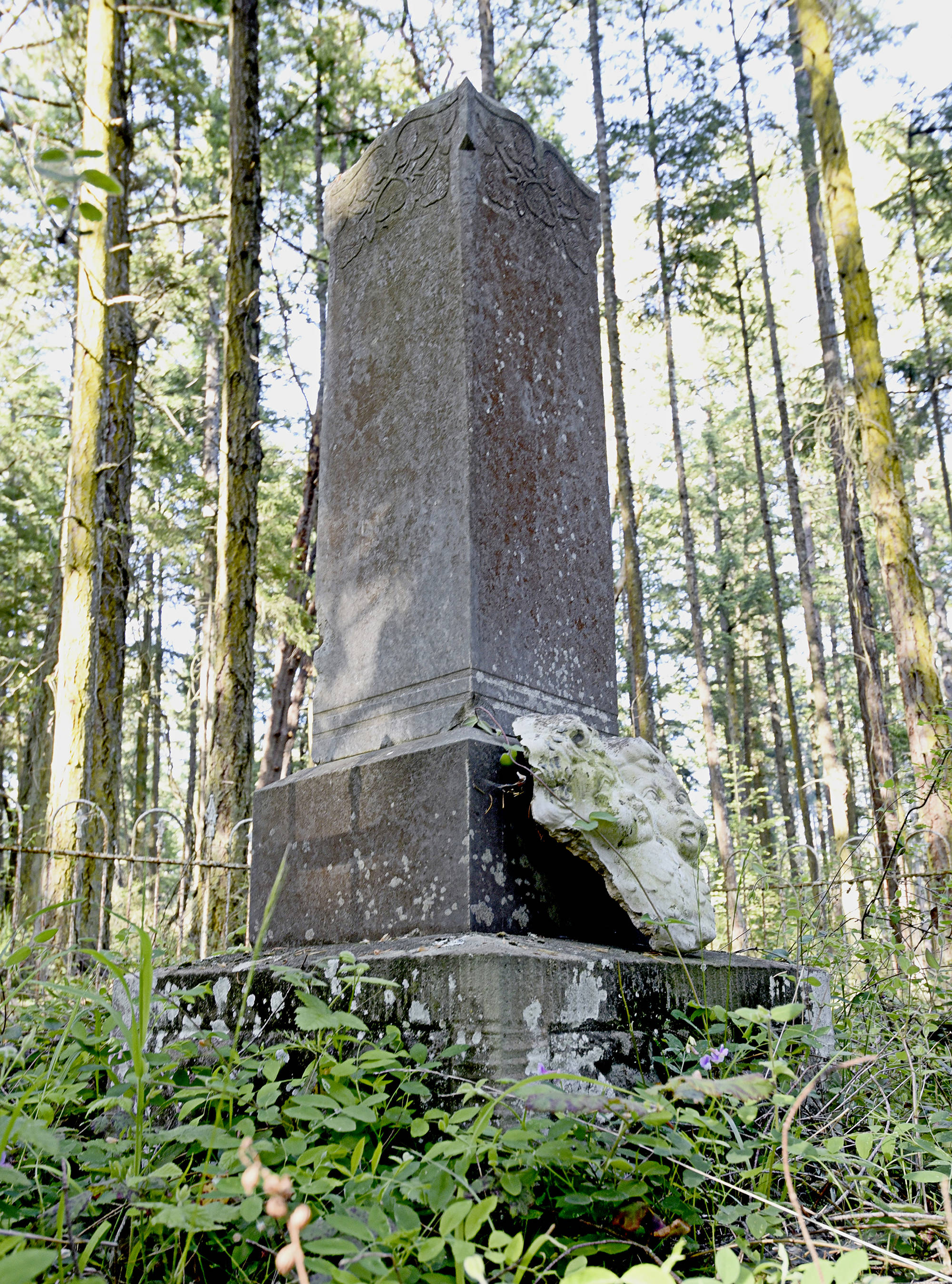Each hand-carved stone in the Roche Harbor Pioneer Cemetery has a tale to tell; memorializing the lives of children, a teacher, laborers and immigrants. Robin Jacobson, board member and volunteer of the San Juan Historical Society and Museum, will provide a glimpse into some of those stories on Sunday, May 19.
“I call my tour a biographical tour, because unlike other cemetery tours, that focus only on the deceased, I talk about the whole family, and what happened after the person died,” said Jacobson, who is also an avid genealogist.
The tour of the cemetery starts at 2 p.m. at the Roche Harbor Cemetery, located on Tangney Memorial Drive in Roche Harbor. The event, sponsored by the historical society and Roche Harbor Resort, is part of Living History Month.
There is an unknown number of unmarked graves in and around the cemetery, according to Jacobson, and 14 marked plots dating from 1891 through 2010. Nine have some form of identification, five are only marked by fencing. Jacobson calls the primary causes of death the three Ds: disease, dynamite and drowning.
Ralph Lincoln Jr. was just 8 years old when he fell off the Roche Harbor docks in late September 1929. The boy became trapped under a dinghy and drowned. When Ralph did not return home that afternoon, a search party was formed. His body was found later that evening near where he fell. The accident made the front page of the Journal, Oct. 3, 1929. His grave is surrounded by low wire and wood fencing, marked by a stone that says “R.W. Lincoln Sept. 1929.” A broken statue of a fawn stands nearby.
Jacobson’s curious nature led her to find out what happened to these families after the loss of their loved one.
In the case of the Lincolns, Jacobson learned through articles, census reports and other records that Ralph’s parents, Elenora and Ralph Lincoln Sr., and their three daughters moved to Seattle shortly after the tragedy. Jacobson found documentation showing Lincoln Sr. was sent to jail, and that Elenora worked as a chambermaid. According to records, the couple divorced. However, Jacobson noted, census reports show Lincoln Sr. claimed to be married, while Elenora claimed she was divorced.
“I’m not sure if he was in denial, or whether she just didn’t tell him,” Jacobson said.
Regardless, Ralph’s sister Bertha did not forget the incident, as she buried her infant next to him in 1943. According to Jacobson, a stone next to Ralph’s is carved with “Twin Boys” and the name Dennine Bruskevith. Dennine, Jacobson said, was Bertha’s daughter.
A combination of shared living quarters, lack of hygiene and yet-to-be-invented antibiotics made disease prevalent in the early 1900s. In 1903 there was a diphtheria outbreak, and in 1909 a tuberculosis epidemic made the bacteria the No. 1 cause of death in the state.
One of the earliest marked graves belongs to two little girls, Agness and Mamie Wilson, daughters of George and Mary Jane Wilson. Agness died from pneumonia at age 10 in 1891. Her 4-month-old sister Mamie died of bronchitis shortly thereafter. The two share a single stone, surrounded by fencing shaped to resemble a bassinet, Jacobson said.
Teacher Elizabeth Tuson Pearson Searles was an Englishwoman who moved to the San Juans in 1895, hoping the fresh air would improve her health, Jacobson said. However, she passed away four years later, due to what is thought to be a chronic heart condition. Searles left behind her husband William and eight children. After Searles died, her family moved to Fairhaven, near Bellingham, before William remarried and emigrated to Alberta, Canada, Jacobson said.
Immigrants at Roche Harbor were predominantly from Germany, Russia, Japan, Scottland, and England. Since limestone quarries and other work found at Roche Harbor offered primarily entry-level positions, these laborers, Jacobson said, they were not typically considering remaining in those jobs forever. Those in the cemetery, however, died before they were able to move on.
Dynamite explosions in the quarries claimed the lives of a few laborers, like Japanese immigrant Y. Ohno, Jacobson said. There are at least two graves marked in Japanese writing. The next challenge, she said, is to have those stones translated.
Kendo Yasuda was the last person to be buried in the cemetery. His parents both emigrated from Japan. His mother, Jacobson said, was a favored cook for the McMillin family, and his father was a powderman and head gardener. Yasuda was born at Roche Harbor, and in 1998, he worked with the San Juan Historical Society and Museum to record an oral history about his childhood there and is featured in Richard Walker’s book “Images of America: Roche Harbor.
Through accidents, lack of medical care and rustic living conditions, early pioneers struggled, leaving behind a headstone, or, in some cases merely an indentation in the ground to remember their tale.
“Living was easier here than where they came from, but it was still hard to survive,” Jacobson said.



